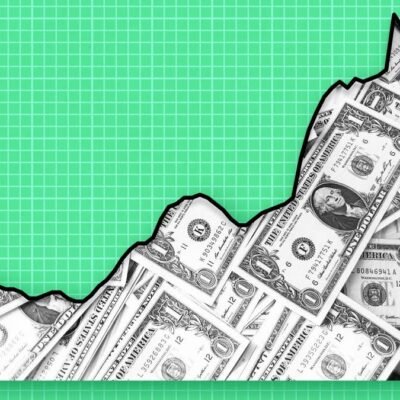Australian mortgage holders may only be handed two or three more interest rate cuts before the Reserve Bank of Australia holds for the long term, a leading economist has predicted ahead of the April rate call.
The RBA is widely expected to hold interest rates on Tuesday after delivering a long-awaited cut in February – the first one in about five years.
It followed the central bank holding rates for almost a year and a half as sticky and persistent inflation slowly dropped to the RBA’s target range.
While most economists and major banks are predicting no change this week, despite a drop in monthly inflation in the 12 months to February, the next meeting in mid-May is where Aussies could see some movement.
However, growing uncertainty around the economy, heightened by United States President Donald Trump’s tariffs, means it is “very difficult to predict” the terminal interest rate, economics professor Steven Hamilton said.
“How many more times do they cut?” Mr Hamilton told Sky News’ Business Weekend.
“(RBA governor Michele) Bullock has said the market is overstating the degree of rate cuts that are coming down the pipe.
“Maybe there’s only two or maximum three left to go until they stop, which is not a lot of rate relief given where rates are.”
NAB is predicting the cash rate will drop from its current level of 4.1 per cent to 3.1 per cent by March next year.
Westpac and CommBank predict the rate will hit 3.35 per cent by December, while ANZ is forecasting the cash rate will hit 3.85 per cent by August.
AMP is also forecasting three more cuts up to February 2026 starting this coming May, with the super fund’s chief economist Shane Oliver telling SkyNews.com.au the cash rate would stabilise around this point.
“Longer term, we’d probably see the cash rate averaging around that sort of level,” Mr Oliver said.
The US President’s trade policies, which point to slower economic growth, could mean further rate cuts beyond this, but the cash rate is likely to remain around the 3.35 per cent mark, the AMP economist said.
He added that even if there was more of a downturn from President Trump’s policies, it is unlikely to bring rates down to the 0.1 per cent mark seen during the pandemic.
“The 0.1 per cent number was reached in the midst of a very different environment,” Mr Oliver said.
“We’d had many years of inflation below targets and we’d gone into a pandemic which threatened deep recession and a long slow recovery.”
While Mr Oliver forecasts several cuts this year, Judo Bank chief economist Warren Hogan has cautioned against them as he continues to warn against high consumer and government spending.
Mr Hogan, who was one of the staunch opponents to the February call as he felt Australians were not able to get an accurate picture of inflation due to government spending, said the election would weigh on the minds of those on the RBA board.
“They move from a very politically sensitive time of the political cycle to one of freedom,” he told Business Weekend.
“I don’t think you should be pencilling in a whole series of rate cuts.
“We might get them… but I can also put a very plausible case why they’re not moving anything in the next six months.”
Tuesday’s call will be the first one under the revised structure of the RBA, which has split the board into two distinct committees for rate setting and governance.
The change came in December, after Labor pushed through the reform with the Greens and independents David Pocock and Jacqui Lambie in late November in a last-minute guillotine motion that rushed 31 bills through the Senate.





